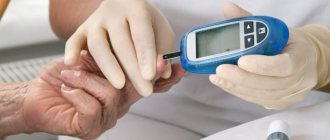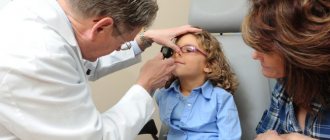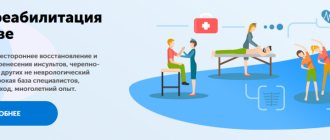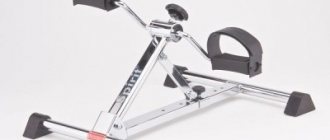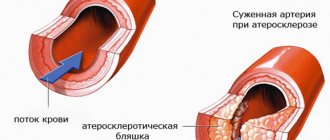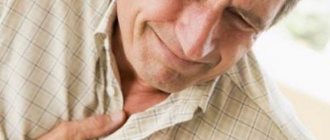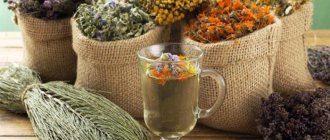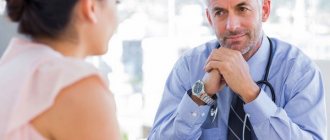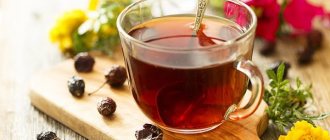How to treat a microstroke: medicines and folk remedies
In this article, we will look at how to treat microstroke in adults.
Treatment Basics
Treatment of a microstroke should begin as early as possible (up to 5–7 hours) after its development, since in the first hours after a microstroke occurs, the development of unwanted complications in damaged small vessels of the brain is minimized.
Complex treatment of a microstroke takes a fairly long period of time and includes taking medications, conducting various exercise therapy, as well as traditional medicine methods.
In addition, regular consultation with a neurologist is necessary (1 – 2 r.
for a month), in order to timely monitor the prescribed treatment process in order to prevent a possible worsening of the disease.
First aid
At the initial signs of a microstroke, it is necessary to urgently call an ambulance, the patient must be placed on the bed, a soft pillow must be placed under the head, outer clothing, a belt must be removed, buttons from compressive clothing must be unbuttoned, given a drink of cool water or sprinkled with it when darkening appears in the patient in the eyes, dizziness, you need to open a window to get fresh air.
Measure blood pressure, if it is elevated - give blood pressure-lowering drugs to drink (captopres, captopril, lozap, diocor, nifedipine, liparazide), or drop 3 drops of farmadipine (but no more) onto a small piece of sugar and take it under the tongue until completely absorbed. If the pressure is low, then the patient should be given askofen to drink, and in case of its absence, drink strong tea or coffee.
If the patient suddenly develops vomiting or nausea, in this case the patient must be turned on his side to prevent possible aspiration (suffocation). Before the ambulance arrives, the patient must be warmly covered and warmed.
Under no circumstances should the patient be given alcoholic, carbonated, or energy drinks at this time, as this will significantly aggravate the course of the microstroke.
Medications
Drug treatment for microstroke is prescribed by a neurologist, depending on the individual severity of the disease. The main medications for the treatment of microstroke are vasodilators, cardiovascular, antithrombotic, nootropic, as well as vitamins.
Vasodilators (Cerebrolysin, Cavinton, Trental, pentoxifylline, cinatropil) are used to locally dilate blood vessels to improve cerebral circulation. The drugs must be taken 1 t. 2 - 3 times a day, for 2 - 3 months. The further course of treatment is prescribed by the attending neurologist, depending on the rehabilitation process.
Antiplatelet agents (aspirin, cardiomagnyl, aspecard) are mandatory complex treatment for microstroke.
Medicines are prescribed for a long period of time, the main therapeutic purpose of which is to thin the blood from blood clots (blood clots). These drugs should be taken in 1 t dose.
1 – 2 r. for a day. The main course of treatment is at least 3 – 5 months.
Heart medications (asparkam, digoxin, verapamil, korglykon) are used to normalize the functioning of the body's cardiovascular system. Medicines should be taken in 1 t dose.
2 – 3 times a day for about 1 month. Asparkam contains a huge amount of trace elements potassium and magnesium, which improve the functioning of the heart muscles, as well as the functioning of the brain.
It is recommended for heart patients to take it on an ongoing basis.
Angioprotectors (bilobil, sulfasalazine) are necessary to strengthen the walls of blood vessels. You need to take these funds 1 t. 1 - 2 r. per day, the course of treatment usually lasts more than 1 - 2 months.
Nootropics (piracetam, fezam, aminalon) improve cerebral circulation, thereby promoting the restoration of memory and intellectual abilities; in addition, metabolic processes in brain tissue are significantly accelerated. It is recommended to take the drugs 1 t. 1 - 2 times a day, on average 1 - 2 months.
Vitamin supplements (kvadevit, dekamevit, corvitol) strengthen the body’s immune system and also help improve brain function. These drugs should be taken periodically, 1 t. 2 - 3 times a day after meals, for 1 month, then you need to take a short break for 1 - 2 weeks, and resume taking them again.
Attention: before taking medications, be sure to consult with a neurologist, so as not to provoke the development of unwanted complications (angina pectoris, coronary artery disease).
Traditional methods
- The root of the licorice herb helps very well to restore impaired cerebral circulation. To prepare this decoction, you need to finely chop the root, pour boiling water over it and leave for 2 to 3 days. The resulting broth must be filtered well, take 1 - 2 tbsp. 2 – 3 times a day for 1 – 2 months;
- A decoction of nettle and plantain leaves, which should be poured into 1 liter, will help improve blood circulation, increase the tone and elasticity of blood vessels. boiling water and leave for 24 hours. You need to take 30 - 40 ml. daily, 3 – 4 times a day;
- Valerian infusion has a good calming and angioprotective (protecting the walls of blood vessels) effect. It is recommended to take 20 - 30 ml. 2 – 3 r. per day for 1 month;
- A decoction of sage leaves has a significant effect on the cardiovascular system and improves blood circulation. To prepare the decoction, take 2 tbsp. l. dry, crushed sage leaves and fill them with 1 liter. boiling water, leave for about 2 - 3 hours. The resulting broth should be filtered, it is recommended to take 1 - 2 tbsp. l. 2 – 3 times a day after meals. The main course of treatment averages 1 – 2 months.
Physiotherapeutic procedures
Regular physical therapy is recommended for most patients who have suffered a mini-stroke and have no contraindications to it. Daily light walking or jogging significantly improves blood circulation in the body and helps speed up the rehabilitation process.
Carrying out local massage is also based on accelerating metabolic processes in the tissues of the body. It is recommended to carry out massage in small courses of 10-14 days with breaks of 1-2 weeks.
Nutrition
After suffering a micro-stroke, patients are strictly prohibited from eating salty, fatty, spicy foods, which will only aggravate the general course of the disease. The diet of patients should be high-calorie, containing a large amount of vitamins (potassium and magnesium), necessary to normalize the functioning of the cardiovascular system.
Prevention
- maintaining a balanced diet (exclude fatty, spicy foods);
- healthy lifestyle without bad habits (smoking, alcoholism);
- physical therapy and sports classes;
- promptly treat chronic diseases of the cardiovascular system (atherosclerosis, arterial hypertension);
- 1 – 2 times a year undergo a medical examination by an ophthalmologist in order to diagnose small capillaries in the retina;
- measure blood pressure regularly.
Remember: compliance with micro-stroke prevention measures significantly reduces the risk of possible development of the disease, as well as its recurrence.
In this article, we found out how to properly treat a microstroke at home.
in social networks
Source: https://in4health.ru/kak-lechit-mikroinsult.html
Risk groups for developing the disease
Modern medicine has clearly identified patients whose health status and lifestyle significantly increase the risk of developing cerebrovascular accidents:
- People with diseases of the cardiovascular system, especially heart rhythm disturbances and arterial hypertension.
- Vascular atherosclerosis is the deposition of cholesterol salts on the inner lining of blood vessels - the formation of plaques.
- Hereditary and acquired blood clotting disorders - antiphospholipid syndrome, polycythemia, Leiden factor defect, and so on.
- Obesity and eating large amounts of fatty and sweet foods.
- Diabetes.
- Smoking and drinking alcohol in large doses.
- Taking combined oral contraceptives by women.
- The period of menopause in women, especially against the background of severe menopausal syndrome.
- Strokes and heart attacks in the past.
- Hereditary predisposition and family history.
- Sedentary lifestyle – especially for bedridden patients.
- Chronic fatigue, stress, emotional distress.
Microstroke: treatment and recovery
There is no official medical term “ministroke”. But this is what doctors call a cerebral stroke, accompanied by minor hemorrhages and minimal foci of necrosis. They are the ones who indicate the development of a pathological condition.
Despite the low degree of damage to brain tissue, treatment and recovery after a microstroke is no different from the treatment of the classic course of the hemorrhagic or ischemic form.
Treatment of microstroke
A microstroke, treatment and recovery after which is carried out according to standard protocols for all types of stroke, is a rather serious condition, so taking various groups of medications becomes a mandatory part of rehabilitation.
The following medications are prescribed for both men and women:
- Thrombolytics. The drugs prevent the formation of blood clots and promote blood thinning. Taking drugs from the group of thrombolytics is an excellent prevention of the development of a recurrent stroke. Acetylsalicylic acid, Clopidogrel, and Ticlopidine may be prescribed.
- Anticoagulants. Promotes blood thinning and prevents thrombosis. The most commonly used are Heparin and Fraxiparin.
- Vasoactivators. They improve the functioning of the central nervous system, promote the expansion of vascular lumens, and also improve cerebral circulation. Propranolol and Pirroxan are prescribed for use.
- Low molecular weight dextrans. Used for peripheral circulatory disorders and for decompensation of heart failure. Reopoliglyukin is most often prescribed.
- Hypotensive. Medicines are intended to lower high blood pressure levels. In the outpatient period, they are prescribed according to indications. Captopril and Nicardipine can be used.
- Neuroprotectors and nootropics. These medications stimulate metabolism and also improve the recovery processes of nerve cells. Improves the tone of vascular walls and blood flow. Taking drugs from these groups significantly increases the patient’s chances of a full recovery. Cerebrolysin, Piracetam, Semax are prescribed for use.
- Medicines that improve metabolism and angioprotectors. They are used to restore the functionality of blood vessels, tone capillaries, eliminate swelling, and normalize the course of metabolic processes. The most frequently prescribed medications include Phlebodia 600 and Troxevasin.
- Vitamin complexes. During the rehabilitation period, the patient must take vitamins.
Drugs prescribed for the treatment of microstroke are selected by the attending physician based on the general condition of the patient.
Recovery after a mini-stroke
Recovery after a mini-stroke should be carried out comprehensively. In addition to taking medications, the patient is advised to follow a diet and daily routine.
Important!
If desired, a person can supplement drug therapy with folk remedies.
Diet
Recovery after a mini-stroke at home involves following the principles of dietary nutrition.
Products must undergo complete heat treatment. It is best to use boiling and stewing. Meals should be fractional - up to 5 times a day - in small portions. This will reduce the load on the organs of the digestive system and improve the absorption of nutrients.
During the day you need to drink at least 1.5 liters of water. A sufficient amount of fluid consumed accelerates the process of eliminating toxic substances.
List of permitted and prohibited products
After suffering a micro-stroke, the patient’s diet should contain the following products:
- fresh vegetables and fruits;
- lean meat;
- cereal soups (based on buckwheat, oatmeal, rice) and vegetable broths;
- porridge with milk;
- fermented milk products are a mandatory group of products that should
- be present in the diet of a person recovering from a stroke;
- low-fat fish;
- honey (recommended for daily use as it improves brain function).
It is recommended to use water, juices, fruit drinks, and compotes as drinks.
The following must be completely excluded from the menu:
- fried/spicy foods;
- salinity, preservation;
- pasta;
- granulated sugar, confectionery;
- tomatoes;
- smoked meats;
- sweet carbonated drinks;
- coffee and caffeine-containing drinks (they can provoke a sharp jump in blood pressure and the development of a recurrent stroke).
Compliance with a diet is an important condition that significantly accelerates the healing process and prevents the development of undesirable consequences.
Advice!
If a microstroke has caused complications in the form of disruption of chewing and/or swallowing, then food should be served in a liquid or puree consistency.
Phytotherapy
You can restore the body after an apoplexy (hemorrhagic stroke) using traditional medicine recipes.
It is recommended to perform self-massage of the affected arms/legs (movements should go strictly from bottom to top), and the cervical spine. The following types of essential oils are used for the procedure (the recommended number of drops is dissolved in 55 ml of any oil of plant origin, for example, olive):
- Sage (7-8 drops). Improves nerve conduction, memory, local blood flow. It is advisable to combine the massage with the use of sage infusion - 1 tbsp. l. dried flowers, brew 210 ml of boiling water, leave for 60 minutes, drink 50 ml four times a day before meals. You can also take baths. The duration of bathing is 20 minutes, the course is 15 baths every other day.
- Rosemary (5-6 drops). Improves local blood circulation, the mental state of the patient, normalizes the state of the nervous system, stabilizes blood pressure.
- Thyme (6-7 drops). Used as an antidepressant and normalizes local blood circulation.
Advice!
Before going to bed, you can light an aroma lamp using essential oils of lemon balm, geranium or lavender. They help calm the nervous system, making it easier to fall asleep.
Patients, including elderly patients, are allowed to practice taking herbal infusions and decoctions:
- Mix the roots of wormwood (60 grams), peony (40 grams), black root (10 grams), motherwort herb (40 grams), cyanosis (40 grams), lumbago (40 grams). Pour a large spoonful of the mix with hot water (1.5 cups) and cook at low boil for 10 minutes. Let it brew for 20 minutes, filter. The infusion should be drunk throughout the day in several doses strictly before meals.
- Wash pine cones (5 pieces), pour alcohol (210 ml) and leave for 2 weeks in the dark. Pour 1 tsp into weakly brewed tea. Take once a day. Pour 5 cones with water (510 ml) and cook after boiling for another 7 minutes. Filter. Take 50 ml after meals. To improve the taste of the drink, you can add a little honey to it. Course - 30 days. The break is 10 days, and the treatment can be repeated.
- Pour dry peony roots (1 tsp) with vodka (310 ml). Leave for 7 days. Filter and drink 25 drops three times a day. The duration of the course is a full calendar month. Break - 10 days, and repeat administration.
Before starting home therapy, you should consult your doctor.
Mode
Rehabilitation after a stroke at home involves following a daily routine. A faster recovery can be achieved by maintaining stability in its schedule, i.e. getting up in the morning, eating and sleeping should always occur at the same time.
The patient is strongly recommended to take daily walks in the fresh air, but they should not cause fatigue. The patient must perform daily exercises. A rehabilitation therapist will help you choose exercises.
If a person’s work involves constant physical and psycho-emotional stress, then it is recommended to change profession.
After a mini-stroke, you must completely stop drinking strong and weak alcoholic drinks, as well as smoking. In addition, a person should undergo regular medical examinations at the clinic to which he is geographically assigned.
Advice!
If you have the opportunity to go to a specialized sanatorium, then you should not refuse it.
The consequences of a microstroke are not as severe as in its classic course. And provided that all the doctor’s recommendations are followed, a person is able to fully recover.
Source: https://ritmserdca.ru/insult/mikroinsult/lechenie-i-vosstanovlenie.html
Prevention of recurrent stroke
- After a TIA, medications are often prescribed that improve blood flow and have a neuroprotective effect: glycine, piracetam, acetylsalicylic acid (ASA), clopidogrel, dipyridamole. In general, in outpatient practice, taking small doses of ASA is the “gold” standard for preventing thrombus formation.
- To prevent stroke, it is necessary to get rid of bad habits (in particular, smoking).
- Treating diseases that cause the development of angiopathy (hypertension, diabetes mellitus) and contribute to the appearance of obstructions to blood flow (atherosclerosis) is an important point in the effective prevention of stroke. Blood pressure should be monitored and, if necessary, adjusted by taking antihypertensive drugs. To normalize cholesterol levels, drugs that normalize lipid metabolism (statins) are prescribed. To prevent pathological changes in the walls of blood vessels, it is necessary to treat diabetes mellitus correctly and promptly.
- Equally important is a healthy lifestyle. Eating healthy foods, regular exercise, and losing weight help prevent the onset of symptoms of vascular disorders.
- If we talk about preventing TIA in women, we should pay attention to the prevention of violations of the rheological properties of blood. For example, the use of oral contraceptives increases the risk of blood clots. Therefore, the use of COCs in women with increased blood clotting is not recommended.
- Pregnancy is also a risk factor for the occurrence of stroke, since changes in hormonal levels affect blood viscosity. Therefore, during this period, women should take medications that reduce the likelihood of blood clots (chimes).
- It is also necessary to promptly treat existing vascular diseases (for example, varicose veins, thrombophlebitis and deep vein thrombosis of the lower extremities - a fairly common problem in pregnant women), because they significantly increase the risk of blood clots.
There are several areas in the prevention of stroke
Microstroke: treatment at home, symptoms, first aid, folk remedies, rehabilitation
A microstroke is a blockage, thrombosis of blood vessels with a lack of oxygen in nerve cells. It is usually easily tolerated and causes less harm to a person than a standard stroke.
However, there is one peculiarity: during a micro-stroke, bleeding may begin, followed by rupture of blood vessels and filling of the brain with fluid.
Symptoms and consequences
The specificity is that lesions are created in the brain for a long time and gradually destroy neural connections. Symptoms may go away on their own within a couple of days.
Important! Frequent cases of microstroke lead to the development of stroke.
The following symptoms are identified:
- sudden severe headaches, dizziness;
- discomfort that occurs in the epigastric region, pharynx and oral cavity, which often ends with vomiting;
- numbness of the limbs;
- formication;
- deterioration of vision: loss of sharpness, dots of different colors float before the eyes;
- speech impairment, the tongue becomes as if mute;
- loss of coordination;
- weakness and rapid fatigue;
- high blood pressure;
- poor reaction to light, pain in the head from sudden noise and unpleasant odors;
- Possible loss of consciousness for some time.
We also recommend that you read the article: “Consequences of hemorrhagic stroke.”
First aid
It is necessary to know the rules of first aid for a micro-stroke, since many people during the acute period of pathology are at home, and see a doctor only after the restoration of lost functions.
The difficulty of treatment lies in the fact that sometimes symptoms last no more than 8–15 minutes, and patients may not see a doctor at all, thereby increasing the risk of stroke.
How to provide medical care:
- It is necessary to give the patient medications that lower blood pressure and make sure that his body is not compressed by tight clothing.
- The patient's head should be raised and fresh air should be provided.
- Until the doctors arrive, it is necessary to measure your blood pressure. The patient should not be given vasodilators. If a person is unconscious, there is no need to try to give him something to drink; the liquid may enter the bronchi and trachea.
Treatment at home
If you want to carry out treatment at home, then before doing so you need to ask your doctor for advice and carry out any actions only together with him.
What recommendations should be followed in this case:
- establish a daily routine and strictly adhere to it;
- Healthy food;
- take medications only in the prescribed dose;
- do not drink alcohol and stop smoking;
- do gymnastics;
- consult a specialist once a month;
- treat chronic heart and vascular diseases;
- monitor blood sugar and cholesterol levels;
- do not give in to stressful situations.
Important! Treatment usually takes 1-2 months, but important rules apply: systematicity, combination, frequency. If these rules are not followed, a mini-stroke may occur again.
Drugs
What medications will help you recover:
- Lovastatin, Simvastatin - to lower blood cholesterol levels;
- Bilobil, Nimodipine are medicines that are of great importance in the complex therapy of various diseases of the cardiovascular system;
- Pentoxifylline, Istenon - drugs that dilate the lumen of blood vessels;
- Ticlopidine, Aspirin-cardio - drugs that reduce thrombus formation by inhibiting platelet aggregation;
- Captopril - prescribed if a person has high blood pressure;
- Mexidol, Actovegin - drugs that improve metabolism;
- Cinnarizine, Piracetam - medications that have a specific effect on the higher mental functions of the brain, help improve memory and concentration.
Diet
Nutrition plays an important role in recovery after a mini-stroke.
What rules should you follow:
- maintain a meal schedule;
- consume in small portions;
- You should not eat fatty, smoked, fried, salty or canned foods;
- reduce the amount of salt to 2-5 g. in a day;
- limit the consumption of high-calorie foods;
- Fruits and vegetables, cereals rich in magnesium, potassium and fiber should be added to the diet;
- include foods that do not contain large amounts of fatty acid (vegetable oils, sea fish, poultry);
- limit fast carbohydrates (butter and confectionery products, potatoes, rice);
- It is best to drink natural juices, compotes and jelly;
- It is better to replace strong tea and coffee with healing herbal infusions (sage, chamomile, mint).
Folk remedies
If you want recovery to take place at an accelerated pace, then it is best to turn to traditional methods that have been proven over the years.
What folk recipes are there:
- Celandine Infusion of celandine will help damaged cells recover. In order to get a decoction, you need to add 1 tbsp. l. dry celandine into a glass of boiling water. Leave the broth for a while, strain and start drinking 20 ml up to three times a day.
- Sage Sage infusion helps restore speech. You need to take 2 tbsp. l. dry sage and pour 350 ml of boiling water. Strain and start taking half a glass 3 times a day.
- Fir cones Infusion of fir cones. We take small young cones, chop them and put them in a jar, which we fill halfway, diluting with a small amount of cold water. The infusion should be left for 2 weeks. Pass through a fine sieve to clean and drink 30 ml. daily.
- Bay leaf One pack of the plant will be enough. Finely chop the leaves, add sunflower oil, let it brew for a week. This product should be applied to the temples of the head several times a day.
- Maryin root Pour one third of a teaspoon of the plant into a glass of boiled water. After 30 minutes, the infusion will be ready to drink. You need to consume 50 ml. throughout the day before meals.
- Onion peels, pine needles and lemon juice Take 5 tbsp. l. needles (variety is not important). The same amount of finely chopped onion peels. Fill all the products with water (1 l) and put on fire (10 - 15 minutes). When the broth has cooled a little, pour in the juice of 1 lemon. Course duration: 2 weeks, 60 ml. daily.
Rehabilitation
Treatment of a patient after a microstroke can begin immediately after his condition has stabilized. If the pathology appears for the first time, then rehabilitation, carried out properly, will help to completely restore the damaged areas of the brain.
General rules:
- Exercising will help you recover faster.
- Light walking and running helps improve blood circulation.
- Massage for two weeks with breaks.
As for nutrition, you should never eat salty, fatty or spicy foods, as they can have a negative effect on the body.
What foods should you eat during the rehabilitation period:
- fresh vegetables (cabbage, onions, carrots, potatoes, parsley, pumpkin, cucumbers, tomatoes);
- fruits (tangerines, oranges, bananas, raspberries, blueberries, currants, apples, kiwi);
- lean meat;
- soup (buckwheat, rice, oatmeal) or vegetable broth;
- milk porridge;
- fermented milk products (milk, sour cream, cottage cheese);
- lean sea fish;
- It is recommended to consume honey in small quantities daily;
- You should regularly drink room temperature water, juice, fruit drink, compote.
Stress and serious internal fatigue are what reduce the effectiveness of treatment and the possibility of resumption of pathology.
Physical activity should be done in moderation, but regularly. Physical exercise every day in the form of exercise will help the body recover. Walking in the fresh air will also help.
In the article “Ischemic stroke of the left side” you will learn all about the disruption of blood supply to the brain.
Microstroke: treatment at home with folk remedies and drugs
There is no such disease as a microstroke in medicine. A stroke is a disruption of blood circulation in the brain. A microstroke is characterized by small hemorrhages that cause less damage. The first symptoms appear in the form of pain in the head, dizziness, sharply increased blood pressure, ringing in the ears and facial asymmetry.
The risk group includes people with the following diseases and risk factors:
- diabetes;
- cardiovascular diseases, especially hypertension;
- excess body weight;
- people over 55 years old.
Treatment of a micro-stroke is practically no different from a stroke: similar drugs and methods of providing assistance to the patient are used.
What is rehabilitation?
An important role in treatment after a microstroke is played by the rehabilitation period at home, which includes many aspects.
- Restoration of blood circulation in brain cells. For this purpose, drugs are prescribed with a strengthening, vasodilating and stimulating effect on blood circulation. In addition to them, medications are prescribed to normalize metabolism in brain cells, which help the patient recover faster, regain speech, memory and intelligence.
- Eliminating the cause of a microstroke. Since its causes are most often diseases, it is necessary to treat the underlying disease. After diagnosing and establishing the causes, the doctor prescribes medications. For atherosclerosis, which has a destructive effect on blood vessels, medications are prescribed to lower blood cholesterol levels, as well as drugs to optimize the metabolism of fats and carbohydrates.
Physiotherapy
Physiotherapy appointment. After a mini-stroke, the sensitivity of the limbs may disappear and coordination of movements may be impaired. Physiotherapy is aimed at relieving pathological muscle tone using heat applications. Acupuncture, moxibustion or acupressure are often used.
It is also very important to do therapeutic exercises. You can perform simple exercises at home to help you recover. This is especially important for people suffering from excess weight.
Exercises should be selected by the doctor individually for each person, taking into account all the diseases and capabilities of the patient. A set of exercises should be performed for several minutes throughout the day. Regularity is very important here; this is the only way to achieve results.
Nutrition and bad habits
According to statistics, people who have suffered a mini-stroke do not lead a completely healthy lifestyle. Often, such people abuse fatty foods, alcohol, sweet, salty and smoked foods.
You need to work with your doctor to create a diet that will help you get rid of excess weight and cholesterol.
Meals should consist only of fresh foods: vegetables, fruits, herbs, cereals, berries. Fatty meat should be replaced with poultry or fish. Refuse or at least reduce the consumption of sweet, salty, starchy and spicy foods.
Mental recovery
After a mini-stroke, it is necessary to visit a psychotherapist and psychologist. Specialists will help you perceive the world anew, not pay attention to trifles, thereby helping you set yourself up for a speedy recovery.
A psychotherapist will help regulate emotions, since after this disease a person becomes nervous, irritable, and is often in a bad mood. In addition, you should use the services of a speech therapist (if necessary).
If there are speech disorders, a speech therapist will help restore it.
Drug treatment
When a microstroke is confirmed, the doctor first prescribes drugs that improve brain function and restore blood circulation in the affected areas. Drugs prescribed after a stroke:
- Lovastatin, Simvastatin - to lower blood cholesterol levels;
- Bilobil, Nimodipine – angioprotectors;
- Pentoxifylline, Istenon - drugs that dilate the lumen of blood vessels;
- Ticlopidine, Aspirin-cardio – antiplatelet agents;
- Captopril - prescribed for high blood pressure;
- Mexidol, Actovegin are metabolic drugs;
- Cinnarizine and Piracetam are nootropic drugs that improve memory and concentration.
Traditional medicine for microstroke
After the attack has passed, medical assistance has been provided and drug therapy has been prescribed, you need to strengthen and restore strength. This is necessary to prevent the occurrence of new attacks, as well as to restore existing lesions.
Some of the most effective means of treating the consequences of a micro-stroke at home are: bay leaf, mumiyo and Maryin root, chamomile and others.
- Bay leaf. A folk method of preparing bay leaves in the form of an oil preparation. The leaf is crushed and poured into sunflower oil, preferably unrefined, and left for a week in the cupboard. The resulting oil product is used to treat areas affected by a micro-stroke.
- Mumiyo. Dilute a small piece of mumiyo with 25 ml of water. The resulting mixture is used as an ointment applied to the affected areas.
- Maryin root. It is necessary to prepare the remedy at home for oral administration: add a third of a teaspoon to a glass of hot water. root After half an hour, the infusion is ready, consume 50 ml during the day before meals.
Diagnostics
The “gold standard” for any cerebrovascular accident is magnetic resonance imaging, or MRI, of the brain. In the image, you can examine in detail all the structures of the brain and see the smallest - down to fractions of a millimeter - lesions. Using MRI, you can also monitor the dynamics of regression or “resorption” of pathological foci.
But MRI is a rare, inaccessible and extremely expensive research method, and performing it for emergency indications for any patient with a headache is extremely difficult and impractical. That is why there are a number of indicative tests, the results of which can be used to assess the need for this research method for a particular patient:
- Examination by a neurologist with specific neurological tests to assess the patient’s stability, the condition of his muscles, reflexes, and pupils.
- Measuring blood pressure and cholesterol levels - the higher these indicators, the higher the risk of stroke.
- Determination of blood clotting - in the presence of certain tendencies to increase coagulation - hypercoagulation - there is a higher risk of blood clots in the vessels of the brain.
Initial diagnosis of stroke at home
I would like to pay special attention to pre-medical diagnosis of ischemic brain lesions. The first signs of a micro-stroke do not always appear in a medical facility; more often it happens at work, on the street or with family. It is important to know what indicative tests can be performed before contacting a doctor.
- Smile. If you ask the patient to smile, the asymmetry of the mouth will be noticeable - one corner will be lower.
- Speech - it is worth asking the patient to say a few simple phrases - for example, a proverb or a saying. Speech will be slower and unclear.
- Movement. You need to ask the patient to raise his arms or legs. If there are cerebral circulation disorders, one of the limbs will lag behind or not obey the owner at all.
These tests, despite their apparent simplicity, are very effective and have saved the lives and health of many people.
Micro-stroke: treatment with drugs, medications, pills, how to treat, brain restoration
In case of acute cerebral circulatory disorders - microstroke - treatment with drugs should be started as soon as possible. Only in this case will the body recover quickly.
With this disease, normal blood circulation is disrupted, and the affected brain cells lack nutrients and oxygen.
This occurs against the background of a sharp rise in pressure in the blood vessels or due to a blood clot in a certain area of the brain.
At the same time, blood pressure increases, the patient’s coordination of movement is impaired, he feels weakness throughout the body, numbness of the limbs and dizziness. If this condition lasts about 6 hours, then blood circulation and brain tissue can be restored. Over a longer period, the cells may die and a large area of the brain will be affected by the stroke.
Hemorrhagic microstroke, drugs
After the onset of a microstroke, first aid is of great importance.
If such therapy is carried out on time and the entire algorithm of actions is carried out correctly, it is possible to achieve complete neutralization of the harmful consequences of pathological disturbances in the hemodynamics of cerebral circulation.
However, if more than 6 hours have passed since the onset of a microstroke, during which appropriate assistance was not provided, further pharmacological intervention will be ineffective.
Although recovery after a micro-stroke is easier compared to a similar procedure for a generalized cerebral stroke, it also requires a lot of time and effort to restore the state of the body that the patient had before the injury. For this purpose, a number of pharmacological drugs of various directions are used. These include:
- thrombolytics - drugs that promote the resorption of small blood clots that can form when a micro-stroke occurs
- Anticoagulants - relatively thin the blood and prevent the potential formation of new blood clots. There are direct (nadroparin, heparin) and indirect (neodicoumarin, warfarin) anticoagulants
- disaggregants - their mechanism of action is almost the same as that of the previous group of pharmacological drugs
- antihypertensive drugs are used when systolic and diastolic blood pressure is above 180/105 mm. rt. Art. respectively
- neuroprotectors - for complete elimination or partial reduction of neurological manifestations (external morphological signs of disorders may be absent)
The appropriate medications are prescribed by a doctor after a thorough examination and taken under his strict supervision. Only a medical professional can assess the general condition of the disorders caused by the onset of a micro-stroke, as well as select rational pharmacological therapy to achieve complete recovery and prevent relapses of this nature.


